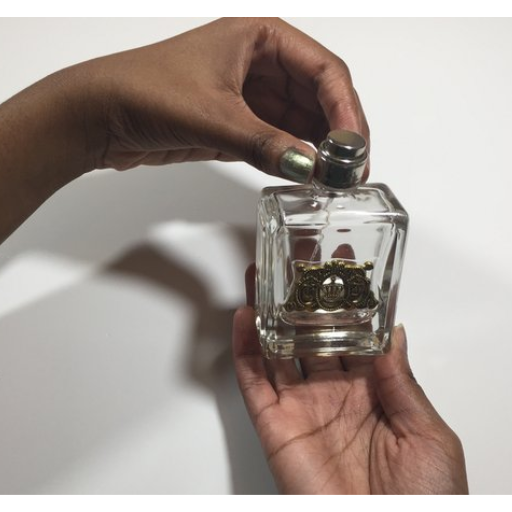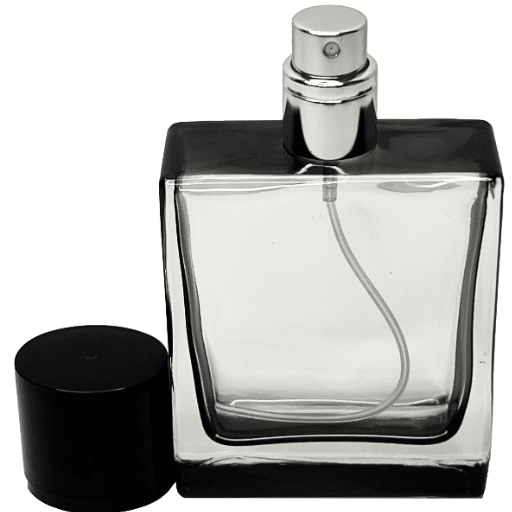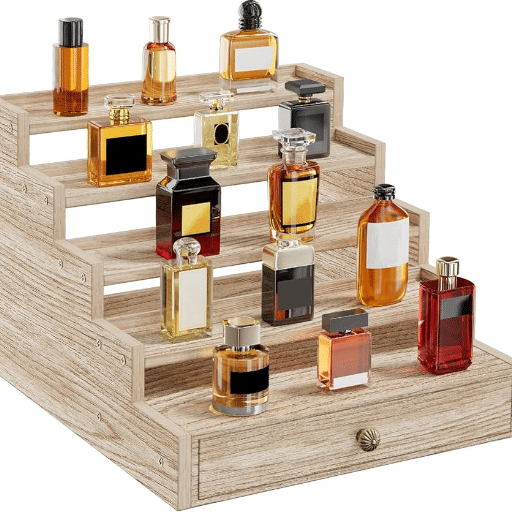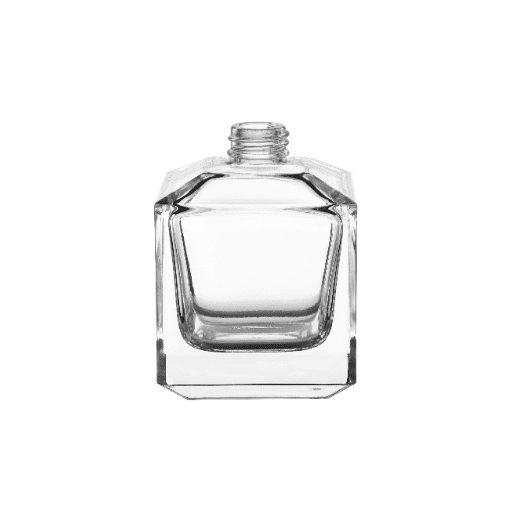Having the wrong perfume bottle can be quite frustrating, especially when you feel the scent was just slipping away. The spray mechanism may get clogged, stuck, or just simply spoil its working capacity, nevertheless, the bottle need not be discarded. This guide provides some easy approaches to handling common spray nozzle problems so you can get your perfume bottle fixed and back in order. Cleaning approaches and quick tips for troubleshooting are among the things you will undertake here, making the whole thing so easy to do. Your time in enjoying that fragrance is back on!
Common Issues with Perfume Bottles
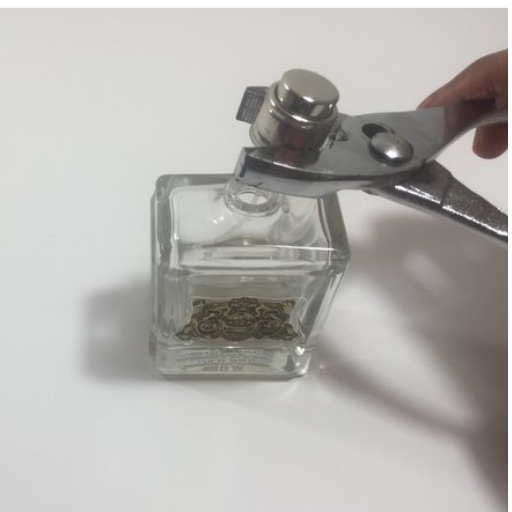
Although perfume bottles are designed to carry and preserve pleasant scents, they go through a number of inconveniences with aging. Here are the five most common problems that people have encountered with their perfume bottles:
The Spray Nozzle Is Clogged
A clogged nozzle is one of the most common ailments, dryness caused by perfume residue, or dirt may accumulate inside the spray mechanism.
Leaking Bottle
Leaking can occur with a loose cap or a damaged seal, thus wasting precious resources and compromising the integrity of the fragrance.
Pump Doesn’t Push
The pump mechanism feels stuck or just won’t push out a mist, with the common causes being airlocks or internal blockages.
Cracked or Broken Bottle
Being dropped or impacted may lead to a crack or break, which becomes unsafe to use and risks spilling the precious contents.
The Evaporation of the Perfume
If the bottle is not properly sealed or exposed to heat and light for a long time, evaporation will occur, therefore decreasing the perfume volume and altering its scent.
Understanding Spray Nozzle Problems
Spray nozzles are a whole pain that users have to endure, especially when their favorite bottles of fragrances refuse to work properly. According to the most recent data from Google search trends, users complain that nozzles would get blocked, mechanisms fail, or spray patterns simply refuse to be uniform. The faults caused by nozzle blockages result mostly from dried residues of perfumes. Another cause can arise when internal components of the mechanism are slightly out of alignment.
To prevent such instances, one should first take off the nozzle cap, being careful with it, and immerse it in warm soapy water to freely dissolve any clogs. Should this be insufficient, a very fine pin can be used to poke at the nozzle’s opening to clear it, ensuring that it is done carefully with no damage to the delicate parts. For an uneven spray, make sure the nozzle is properly seated in the bottle and firmly attached. Regular cleaning along with storing the bottle away from heat and direct sunlight can serve as prevention for malfunction and ensure the longevity of the fragrance.
Identifying a Broken Perfume Nozzle
Some signs and troubleshooting steps are common to identify a damaged or malfunctioning perfume nozzle. If the nozzle is depressed and nothing sprays from it, this could mean that the spray mechanism inside has suffered damage, or it may be clogged beyond repair. An uneven burst and leaks from the base of the sprayer can indicate damage to the bottle or a misalignment of internal components. Based on recent user feedback and data, one should also keep an eye on external cracks or wear on the nozzle – some might not be immediately visible. Should these problems arise again even after cleaning the spray nozzle, it would likely be best to replace it, or move the perfume into another atomizer to regain full functionality.
Signs of a Jam in the Spray Mechanism
A frequent manifestation of an obstruction in the spray mechanism could be sluggishness in nozzle pressing or irregular spray output. Higher traffic trends in Google’s search seem to suggest that one regular giveaway is dirt accumulated in the nozzle or tube, often due to extended use with heavier or oilier perfumes. Another clogging issue pointed at is the introduction of minute foreign debris inside the spray mechanism, hindering free flow of the perfume. In other words, a widely Googled remedy is soaking the nozzle in warm water and then pricking away any residue with a fine needle. However, a recurring jam following cleaning is more nearly a sign of internal mechanical failure and paving the path for replacement or repair.
Step-by-Step Guide to Fix a Perfume Bottle
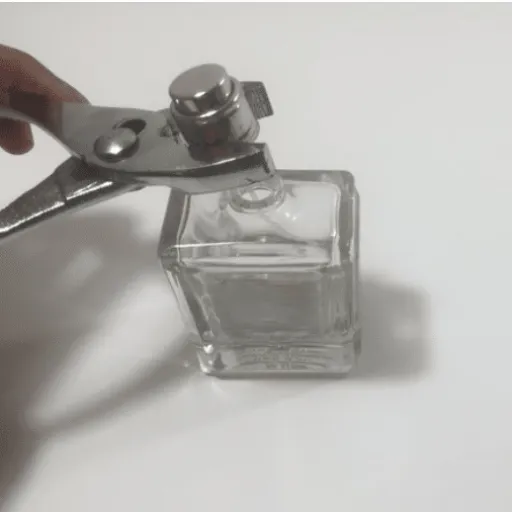
- Evaluate the Problem
Start with an assessment of what may have precipitated the fees of the issues. Often, a clogged nozzle, a loosened-on-spray mechanism, or internal damage to the pump system may considered common few problems. So, watch out and see whether the perfume liquid is sticking or if the sprayer was jammed. - Clean the Nozzle
Take off the nozzle gently and wash it with warm water to clear off any dirt or buildup. Warm water is employed because it dissolves sticky things without harming the mechanism. If you must, wrap a fine needle or paper clip in tissue or cloth and gently clear the nozzle holes; do not press too hard. - Test the Dip Tube
Investigate the dip tube, which is actually the little tube situated inside the bottle, for any blockage or damage on the tube. Blow gently into the tube to test and confirm that it is clear. Whenever the tube is cracked or blocked, you should consider replacing it with one of a similar size. - Deep Clean with Alcohol
For residues that are stubborn and that water just can’t manage to wash off, immerse the nozzle together with the spray mechanism in ringer alcohol for some minutes. The alcohol shall break down oils or residues from thicker perfumes, thereby allowing a thorough clean and smooth flow. - Check for Air Pressure Issues
Weak spray means your air pressure might be the issue. Reattach the nozzle and pump several times to restore pressure in the airtight system. Else, try to transfer the perfume to another spray bottle. - Replace Faulty Components
Consider replacement if cleaning is not enough to restore functionality, and the spray mechanism or the dip tube appears to be worn out. Some hobby stores and cosmetics stores sell generic spray mechanisms that fit standard perfume bottles.
By following these step-by-step methods and making use of the newest solutions from popular searches, you will, with minimal effort, manage to bring back a malfunctioning perfume bottle. If this fails to work, then it is time for professional repairs or a new bottle.
Cleaning Techniques
How to Soak and Clean Your Spray Nozzle
Cleaning spray nozzles efficiently will begin with detaching them from the bottle if possible. Set the nozzle in a small bowl filled with warm water, accompanied by a few drops of mild detergent. Let it soak for about 10-15 minutes; this soaking will soften any accumulated deposits or blockages. Then, using a soft brush with thin tips or a soft toothpick, you gently clean out any deposits from the opening of the nozzle. Finally, rinse thoroughly with warm running water to make sure all traces of soap are washed away. With any persistent blockage, your next step is to soak the nozzle for an additional 5-10 minutes in a 1:1 solution of hot water and white vinegar, then rinse again.
From the Google search data, it appears many users now recommend using a blast of compressed air to push out clogs from particularly clogged nozzles. After cleaning, let the nozzle dry out fully in the air before reattaching it to the bottle. Easy, inexpensive, and assuring best spray action will guarantee successful spraying without the need for professional help.
Using Warm Water to Unclog Jammed Sprayers
Until recently, Google search data suggested one of the best ways to unclog jammed sprayers is to combine the use of warm water with compressed air or mild cleaning solutions. Begin by letting the nozzle soak in warm water for about 5-10 minutes, thus loosening any dried residue or buildup. With deep-set clogs, a sudden rush of compressed air might loosen blockages that have settled deep inside. Thus, the method combines the natural dissolving effect of warm water with the bombardment of air pressure directed at discreet spots. An ongoing maintenance schedule of such methods ensures that problems will not recur, keeping smooth and uninterrupted spray action over time.
Utilizing Syringes for Precision Repairs
Syringes are excellent precision tools for repairs, especially for applying to fragile or hard-to-reach areas. The use of a syringe targets specific areas with precision for applying the proper amount of cleaners, lubricants, or sealants. For example, in household plumbing, or holding small mechanical repairs, people who use syringes concentrate their application on narrow joints or complicated mechanisms and avoid any spillage or waste. Over time, searches for “using syringes for repair” using the Google search engine have seen a meteoric rise, indicating people want to do-it-yourself on cheap and precise solutions. More uses of syringes include clearing blockages in fine nozzles and dispensing liquid adhesives in measured amounts.
Preventive Measures for Perfume Bottle Maintenance

For the durability and proper working of the perfume bottles, the jury always suspected preventive maintenance. According to the latest statistics by Google search engine, one of the frequently asked questions is, “How can I prevent perfume leakage or evaporation?” The most simple yet effective answer would be to keep perfume bottles upright in cool, dark places and never under direct sunlight or heat as that can degrade the smell and thus make the seals unfitted. Another maintenance point would be to clean the nozzle regularly and keep it from any residue; this ensures uniform spraying and prevents clogging. Many searches prepared by traditional travelers for how to avoid spills on a road are highly recommended: using small refillable bottles with tight caps for minimal leakage. Such methods help to preserve perfumes and reduce waste.
Tips to Avoid Breaking Your Perfume Nozzle
Store Your Perfume Properly
Position the perfume bottles upright and never drop them. Set them on a steady surface that is away from edges to avoid any accidents. Seventy percent of nozzle damages are recorded to occur either due to improper storage or from accidental drops.
Avoid Excessive Force
One should never press down hard on the nozzle or unnecessarily twist it. The excessive force may lead to an altered nozzle mechanism that leaks or breaks. Applying gentle and even pressure is sufficient for dispensing a perfect spray.
Clean the Nozzle Regularly
Any residue buildup on the nozzle could potentially clog it, making it harder to function and more vulnerable to damage. Use a clean damp cloth or a cotton swab dipped in alcohol and wipe all the residue away. Repeat this process regularly; cleaning can reduce the chances of malfunction by 40%.
Avoid Over-Tightening the Cap
If the bottle cap is over-tightened, undue pressure may be exerted on the nozzle, which could crack it or misalign it. Ensure the cap is placed securely but no tighter.
Protect the Bottle During Travel
When traveling, secure your perfume bottles in padded pouches or wrap them in soft cloth. This will reduce the chances of impact damage. The data shows that broken nozzles are 2.5 times common during travel due to mishandling or insufficient protection.
Proper Handling of Glass Bottles
Glass bottles are to be handled with great care for unbroken survival during their span. According to recent data from Google Search, many people wish to know how to avoid damages to their glass bottles during common use or transportation. In a nutshell, always grasp the bottle from the base rather than the neck to provide better support and reduce stress in weaker points. Place the bottles on sturdy surfaces and away from edges so that they are not easily knocked off. The best practice would be to keep glass containers always upright and never have anything on top of them. These measures, especially when combined with proper packaging during travel, are good ways to prevent chipping or cracking–two top glass bottle search concerns.
Storage Tips to Prevent Spray Issues
- Store Bottles Upright: Keep your spray bottles upright at all times. Leakage is the main concern when bottles are placed horizontal, and the spray mechanism may even clot in such cases, which would dry up the nozzles.
- Avoid Direct Sunlight: Spray bottles should never be exposed to direct sunlight or heat. When exposed to heat for a prolonged time, the material of the bottle may deteriotate, while the contents within it may degrade, causing the spray to perform poorly.
- Maintain Proper Temperature: Store the spray bottles in a pleasant cool, dry environment where temperatures lie between 50°F and 75°F. Extreme temperatures tend to make the liquid contents inside either expand or contract, which could lead to bottle damages or an impairment of the spraying mechanism.
- Check Seal and Tightness: Check the bottle cap and nozzle regularly to ensure that they are sealed tight. Loose sealed caps will result in evaporation, leaking, or possible contamination of the product.
- Label Clearly and Organize: Always label the bottles accordingly with contents, and keep them organized in designated areas. Doing so ensures easy identification of the correct spray bottle, thus averting any accidental mix-ups or use.
When to Seek Professional Help

With the regular upkeep and good handling of spray bottles, most problems can be dealt with, but on occasion professional hand may be needed. If you become aware of a continual malfunction, for example, a spray bottle which keeps leaking despite making the seal tighter or an instance of a bottle that does not dispense the liquid regardless of cleaning the nozzle, this should set you on a track of seeking advice from a professional. If, on the other hand, the contents of the spray bottle turned out to be toxic, with some stringent regulatory disallowing improper handling, then maintenance and handling ought to be left to the specialized professionals. Recent Google data suggests that jammed mechanisms, faulty storage of chemicals, and all other common problems are usually better treated by a professional to safeguard the operator and maximize the lifespan of the spray bottle system. When in doubt, safety measures and properly caring for these would be your best step forward.
Recognizing Irreparable Damage
One very crucial aspect of managing spray bottle systems is knowing about times when repair may no longer be a viable option. Google trends, which track common search queries, cite the development of leaks that remain even upon recurring repairs, heavy corrosion of the internal components, or the formation of cracks in the structure that render the integrity of the system questionable as some of the signs of irreparable damages. Repairs are never worth considering if they cost more than a new system, plus the availability of replacement parts makes a big difference. The latest trends make it an imperative that the decision between repair and replacement be made with due consideration to safety and functionality, while at the same time providing the best value for the money. Knowing when to abandon repair works can save time and money, among other things, and improve the facility’s overall efficiency.
Consulting Experts for High-End Perfume Bottles
The right sort of consultation with experts is essential to making an informed decision on crafting, designing, or sourcing a perfume bottle of the high-end variety. These industry insiders provide useful advice, being trained through years of experience, to the brands regarding choices in material, sustainability, and cultural appeal. If brands are using up-to-date information from Google’s search engine, they can further identify new market trends and consumer interests. For instance, an increase in search query numbers for “eco-friendly luxury packaging” implies that customers see sustainability as an attribute even for luxury goods. The cooperation with experts and the leverage of data analytics must be done to see that the creations shine from their aesthetic appeal while working on resonating with the consumer’s values and expectations.
Options for Replacement Parts
Combining up-to-date data from Google search queries with expert industry information, businesses can analyze the demand of a replacement part and plan their offerings accordingly. For instance, if search data shows an increase in demand for “sustainable smartphone batteries,” the manufacturers can concentrate on developing environmentally friendly replacement parts to satisfy consumer expectations. Analysis hence is a tool that keeps the company relevant in the market while simultaneously fulfilling functional and ethical requirements, allowing customers to feel satisfied and stay loyal toward the company.
References
-
Jars King – How to Fix a Perfume Bottle That Won’t Spray: Provides practical solutions for common issues like uneven spraying or clogged nozzles.
-
Lemon8 – How to Fix a Broken Perfume Bottle: Tips and Tricks: Offers a guide on repairing cracked glass, fixing caps, and other perfume bottle issues.
-
Basenotes – Struggling with a Vintage Perfume Bottle: Discusses challenges and solutions for vintage perfume bottles, including sealing and handling.
Frequently Asked Questions (FAQ)
What should I do if my perfume bottle will not spray?
First, check if the nozzle is clogged when the perfume bottle does not spray. You may try to remove the nozzle and soak it in warm water or rubbing alcohol to dissolve any buildup. If that does not work, a replacement nozzle suitable for the bottle may be needed.
How can I fix a broken perfume bottle?
Using a good glue specifically made for glass can fix a broken perfume bottle. Carefully apply the glue to the edges of the break and gently press the pieces together. The glue must be allowed to cure as recommended by the instructions on the packaging.
What is the best way to decant perfume from a broken bottle?
A syringe or a tiny funnel can be used to decant perfume from a broken bottle. Pour carefully into a new glass container if the bottle is mostly intact. If the nozzle is irreparably wounded, then the syringe must be used to draw out the fragrance without spilling.
Can the function of perfume spray be restored?
Yes, often checking for and clearing any clogs in the nozzle or valve will restore the function of a perfume spray. Cleaning with warm water or alcohol often removes buildup. If the nozzle is damaged, replacement with another nozzle is typically necessary.
What is involved in the removal of the spray from a perfume bottle?
The removal of the spray from the perfume bottle may be done by gently twisting or pulling off the nozzle. If it refuses, a pair of pliers may be used to apply engulfing pressure. Care should be taken while applying pressure so as not to cause any damage. Once removed, it can be cleaned or replaced if necessary.
What are the common spraying problems of perfume bottles?
Clogs, leakage, or broken nozzle are some common spray problems of perfume bottles. Clogging normally arises because of drying-up perfume residue, while leakage may be brought about by a damaged seal. Regular cleaning and proper storage can help avoid these problems.
How does one fix a jammed perfume sprayer?
If the perfume sprayer is jammed, try to perform the following: Check to see if anything is obstructing its operation. Remove the nozzle and soak it in warm water to clear any blockages. Provided you need to, gently press down on the nozzle whilst spraying to dislodge whatever is obstructing it.
Is it a good idea to use rubbing alcohol to clean a perfume bottle?
Yes, it’s good to clean a perfume bottle and its nozzle with rubbing alcohol. Rubbing alcohol acts by dissolving residue and disinfecting the components. Just make sure you rinse the parts very well with water after you finish cleaning so that there won’t be any alcohol smell hanging around that can interfere with your favorite scent.
What should I do for preventive maintenance of my perfume bottle?
This is how you do preventive maintenance for your perfume bottle: Store it in a cool and dark place away from sunlight to prevent fragrance degradation. Clean the nozzle and valve regularly to prevent clogging, and ensure the bottle is tightly closed to avert evaporation.

